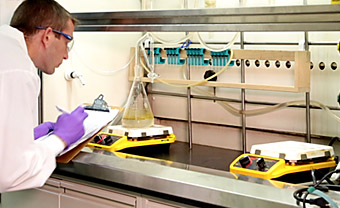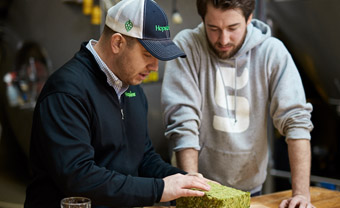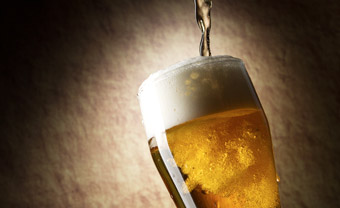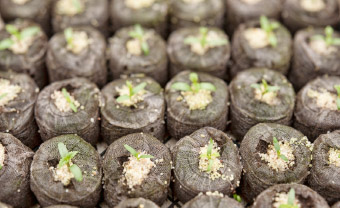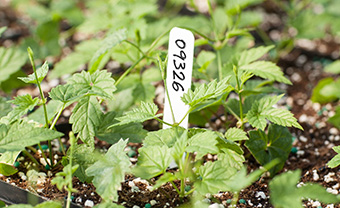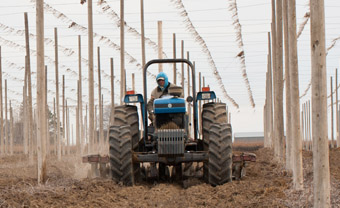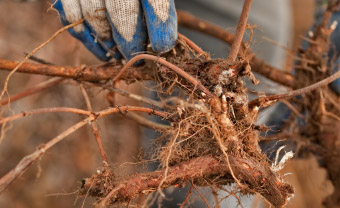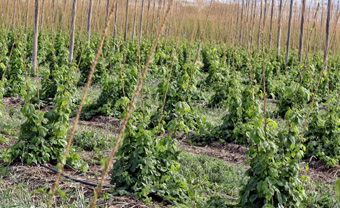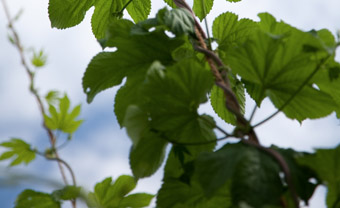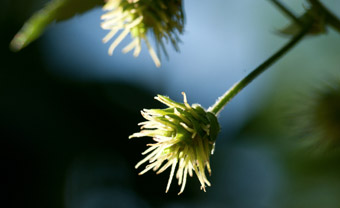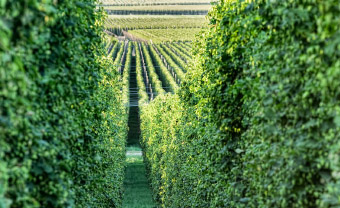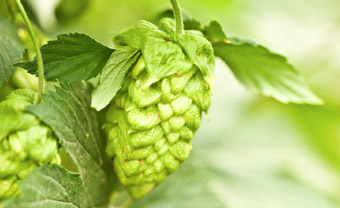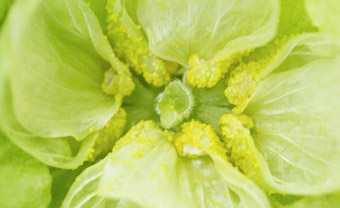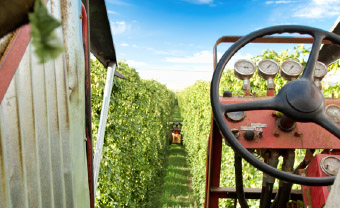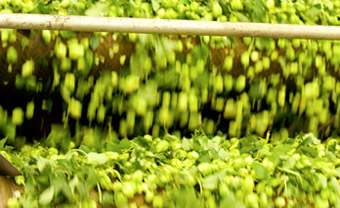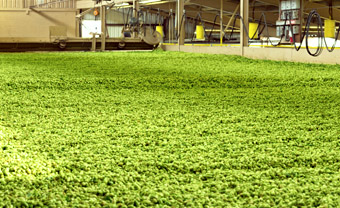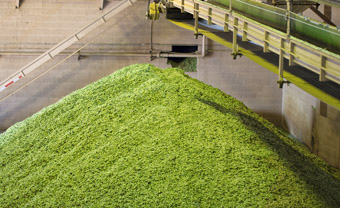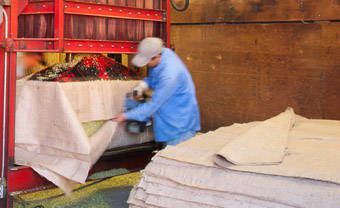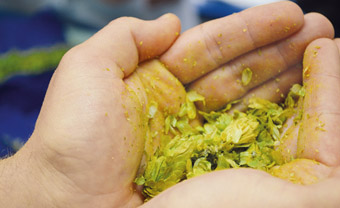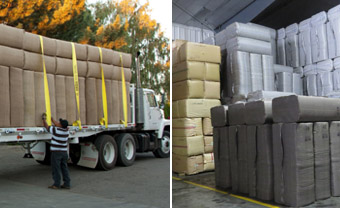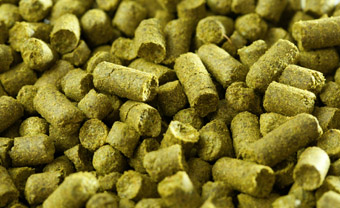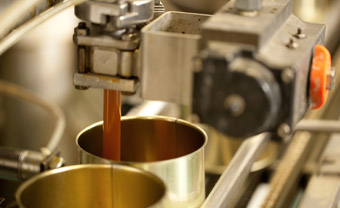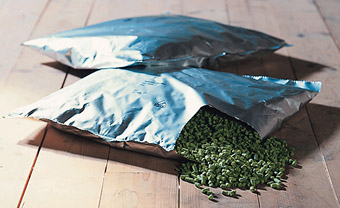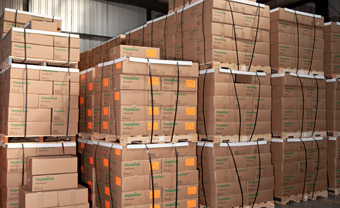LIFE OF A HOP
LEARN ABOUT A HOP’S FASCINATING JOURNEY FROM OUR FARMS TO YOUR BEER
Previous
Research & Development
Hopsteiner’s hop research facilities focus on constant improvement, and new product development.
Customer Support
Hopsteiner’s technical staff provides a wide range of client services, including on-site brewery support.
The Proof is in the Pour
For over 170 years, Hopsteiner has built a reputation of providing top quality hops at the best possible price.
Agronomy
Experimental hop seedlings emerge in our greenhouses in preparation of planting baby hop yards this season.
Breeding
Hopsteiner’s breeding program has released exciting, new hop varieties, including Lemondrop and Eureka.
Preparation
Hopsteiner farms and farm managers set the industry standard for agricultural practices and sustainability.
Propagation
Farmers plant hop rhizomes, the heart of the root system which stores and transfers food for the bine.
Baby Hops
New hop growth emerges from the ground in the spring, and bines begin to reach towards the sun.
Growing
Hop bines climb the coir twine in a clockwise-spiral, upwards until they reach the top of the 18’ tall trellis.
Flowering
As the hop bines begin to reach the trellis tops, they generate lateral shoots that produce the hop flowers.
Healthy Hops
During the summer months, hop yards start to top out when all of the laterals fill-in with full growth.
Cone Maturation
A mature female hop cone is ready to harvest when the flower begins to feel dry and papery.
Oils and Acids
Inside the hop cones, your can see yellow lupulin glands packed with the essential hop oils and acids.
Harvesting
Mobile harvesters called “combines” line the hop fields ready to start the annual hop harvest.
Sorting
Hop cones are then separated from leaf and bine in cleaning stations – leaving only raw leaf hop cones.
Drying
Hop cones are laid out on massive-sized hop kilns where they are gently heated until thoroughly dried.
Cooling
Dry hop cones are then piled high on cooling floors which help maintain their color and essential oils.
Baling
The dried and cooled hops are then compressed in 200-pound canvas bales, sealed with a hand-stitch.
Hop Selection
Hop bails are quickly transported to Hopsteiner’s cold storage facilities where they await processing.
Shipping/Cold Storage
Hop bails are quickly shipped to our cold storage facilities to protects their soft alpha and beta resins.
Pelletizing
Hop leaf is ground into powder and forced through a die under extreme pressure to form dense hop pellets.
Extract & Downstream
Hopsteiner provides traditional hop products, as well as the most advanced hop downstream products.
Quality Packaging
Hop pellets are fresh-packed in nitrogen-flushed mylar pouches and heavy-duty crates with data label.
Logistics
Orders are processed to ensure shipments arrive on schedule. We offer storage and delivery programs.
Research & Development
Hopsteiner’s hop research facilities focus on constant improvement, and new product development.
Customer Support
Hopsteiner’s technical staff provides a wide range of client services, including on-site brewery support.
The Proof is in the Pour
For over 170 years, Hopsteiner has built a reputation of providing top quality hops at the best possible price.
Agronomy
Experimental hop seedlings emerge in our greenhouses in preparation of planting baby hop yards this season.
Breeding
Hopsteiner’s breeding program has released exciting, new hop varieties, including Lemondrop and Eureka.
Preparation
Hopsteiner farms and farm managers set the industry standard for agricultural practices and sustainability.
Propagation
Farmers plant hop rhizomes, the heart of the root system which stores and transfers food for the bine.
Baby Hops
New hop growth emerges from the ground in the spring, and bines begin to reach towards the sun.
Growing
Hop bines climb the coir twine in a clockwise-spiral, upwards until they reach the top of the 18’ tall trellis.
Flowering
As the hop bines begin to reach the trellis tops, they generate lateral shoots that produce the hop flowers.
Healthy Hops
During the summer months, hop yards start to top out when all of the laterals fill-in with full growth.
Cone Maturation
A mature female hop cone is ready to harvest when the flower begins to feel dry and papery.
Oils and Acids
Inside the hop cones, your can see yellow lupulin glands packed with the essential hop oils and acids.
Harvesting
Mobile harvesters called “combines” line the hop fields ready to start the annual hop harvest.
Sorting
Hop cones are then separated from leaf and bine in cleaning stations – leaving only raw leaf hop cones.
Drying
Hop cones are laid out on massive-sized hop kilns where they are gently heated until thoroughly dried.
Cooling
Dry hop cones are then piled high on cooling floors which help maintain their color and essential oils.
Baling
The dried and cooled hops are then compressed in 200-pound canvas bales, sealed with a hand-stitch.
Hop Selection
Hop bails are quickly transported to Hopsteiner’s cold storage facilities where they await processing.
Shipping/Cold Storage
Hop bails are quickly shipped to our cold storage facilities to protects their soft alpha and beta resins.
Pelletizing
Hop leaf is ground into powder and forced through a die under extreme pressure to form dense hop pellets.
Extract & Downstream
Hopsteiner provides traditional hop products, as well as the most advanced hop downstream products.
Quality Packaging
Hop pellets are fresh-packed in nitrogen-flushed mylar pouches and heavy-duty crates with data label.
Logistics
Orders are processed to ensure shipments arrive on schedule. We offer storage and delivery programs.
Research & Development
Hopsteiner’s hop research facilities focus on constant improvement, and new product development.
Customer Support
Hopsteiner’s technical staff provides a wide range of client services, including on-site brewery support.
The Proof is in the Pour
For over 170 years, Hopsteiner has built a reputation of providing top quality hops at the best possible price. Next
DID YOU KNOW?
736 YEAR OF THE FIRST DOCUMENTED HOP YARD AT A BAVARIAN MONASTERY 822 YEAR HOPS FIRST APPEARED IN CONNECTION TO BREWING IN NORTHERN FRANCE 1405 YEAR JOHN THE FEARLESS LEGALIZED HOPS WITHIN THE COUNTY OF FLANDERS 1516 YEAR REINHEITSGEBOT PASSED IN BAVARIA, REQUIRES BEER USE WATER, HOPS & BARLEY ONLY
Hopsteiner is a vertically integrated global hops supplier dedicated to delivering the finest hops and hop products available. Founded in 1845, Hopsteiner is a sixth-generation grower that continues to advance the industry as one of the foremost international hop growing, breeding, trading, and processing firms in the world. Hopsteiner ships hops globally and partners with breweries of all sizes, offering unique hop varieties and innovative hop products designed to enhance flavor, aroma, consistency, and flexibility for brewing and beyond.
All images on site owned and protected by Hopsteiner
® | site comments
click here
 736YEAR OF THE FIRST DOCUMENTED HOP YARD AT A BAVARIAN MONASTERY
736YEAR OF THE FIRST DOCUMENTED HOP YARD AT A BAVARIAN MONASTERY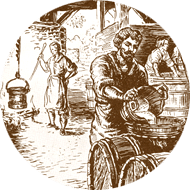 822YEAR HOPS FIRST APPEARED IN CONNECTION TO BREWING IN NORTHERN FRANCE
822YEAR HOPS FIRST APPEARED IN CONNECTION TO BREWING IN NORTHERN FRANCE 1405YEAR JOHN THE FEARLESS LEGALIZED HOPS WITHIN THE COUNTY OF FLANDERS
1405YEAR JOHN THE FEARLESS LEGALIZED HOPS WITHIN THE COUNTY OF FLANDERS 1516YEAR REINHEITSGEBOT PASSED IN BAVARIA, REQUIRES BEER USE WATER, HOPS & BARLEY ONLY
1516YEAR REINHEITSGEBOT PASSED IN BAVARIA, REQUIRES BEER USE WATER, HOPS & BARLEY ONLY




